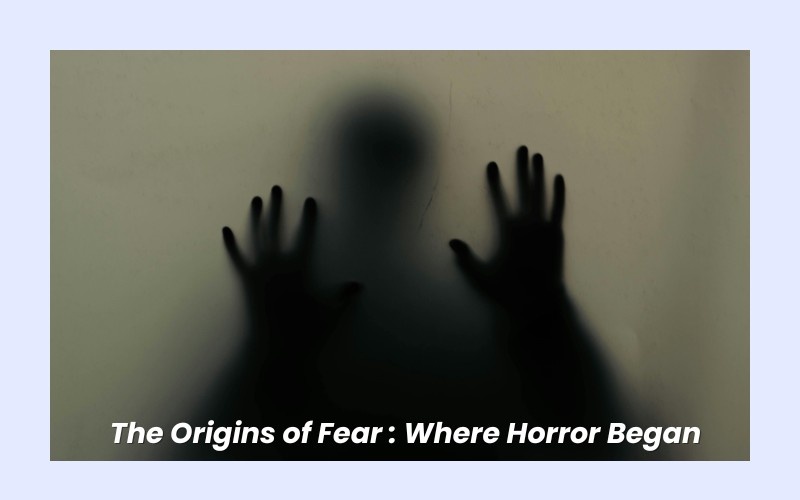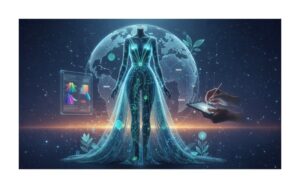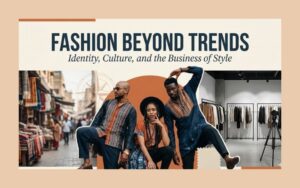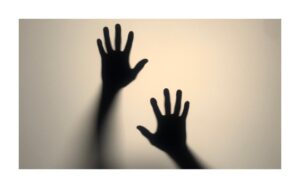Long before Hollywood concocted the jump scare or writers wrote complicated stories of supernatural terror, human beings were relating frightening stories. These weren’t necessarily entertainment per se—rather, they were survival strategies, methods of bracing oneself for actual threats that hung out in the shadows beyond the reach of the fire. Our forebears knew something basic about fear that we’re still struggling with today: it has a use.
But even as these material worries developed into more generalised terrors, the basic function did not change. Horror tales provided a way for communities to deal with forbidden topics, to speak of death and violence and moral sin in a format that sanctioned such talk. They provided a safe place for dangerous thoughts.
The 18th-century Gothic tradition made this notion into a work of high art.
The Psychology of Terror
What goes on in our brains when we decide to be scared? This produces a peculiar psychological state in which we can feel the thrill of danger without in fact being in danger.
It’s this contradiction that creates what researchers term “benign masochism”—pleasure in negative emotions when we’re aware we’re really safe. It’s the same effect that accounts for why we enjoy consuming spicy food that physically hurts us, or why we may find pleasure in a good cry at a sad film. What’s central is that we have control over the experience.
For others, this managed fear is an emotional purging. It provides them with a safe space in which they can prepare for the experience of anxiety and stress. Horror fans will frequently characterize the genre as cathartic—a means of processing real-world fears through the confrontation with symbolic representations of them within fiction.
There’s also a social aspect to horror that must not be discounted. Experiencing frights with others forms bonds between individuals.
Literary Landscapes of Dread
While film has provided horror with a face, literature is its heart. Something about words on paper is so unsettling because it mandates us to become active authors of our own terror.
Writing enables horror to enter our brains in ways that video and film cannot. A good horror writer can write something so gruesome that no budget for special effects could do it justice, because they’re writing directly to our imagination. They can inspire fear through pacing, through the deliberate not telling of things, through slow revelations of awful truths.
Horror fiction has consistently pushed boundaries that other media could not. Authors such as Clive Barker and Thomas Ligotti have explored limits of physical and psychological extremity that it would be impossible to show on screen. They’ve employed the closeness of the reading medium to take us where we possibly ought not to go, but somehow do anyway.
Cultural Mirrors: How Horror Reflects Society
Horror is always a genre of the time, a symptom of the particular fears and anxieties of the culture that generates it. The monsters that frighten one age may seem antiquated to the next, but the demonology they embody tends to live on.
The Victorian vampire tales captured fears regarding foreign influence, disease, and sex. Count Dracula was not only a bloodsucker but also a symbol of all kinds of fears—about immigration, about the profaning of innocent English womanhood, about the introduction of foreign diseases and foreign morals. The sexual undertones that readers today so readily perceive were hardly undertones at all to Victorian audiences who were surrounded by a culture fixated on purity and moral pollution.
The atomic era produced monsters of its own. Radiation-swollen bugs and nuclear mutants mirrored very real anxieties regarding the potential of humanity that had been unleashed. These beasts were not supernatural—quite the opposite, they were scientific, the inevitable product of humanity’s arrogance. The message was unmistakable: we had made the instrument of our own demise.
The Cold War period gave rise to invasion and infiltration horror films. Tales of communist infiltrators and alien body snatchers played the same psychological role, venting worries over losing personal identity to outside ideologies. The horror was not in the gore—it was in the potential that we could end up being something else without ever knowing it.
Later decades have had horror confront new fears. The early 2000s zombie revival was all about post-9/11 fears of social deterioration and loss of security. They weren’t so much about the undead as about civilisation breaking down, about what goes wrong when the institutions we rely on do not hold up. They were written from fears about pandemic illness, about economic meltdown, about the vulnerability of the social order that we all assume.
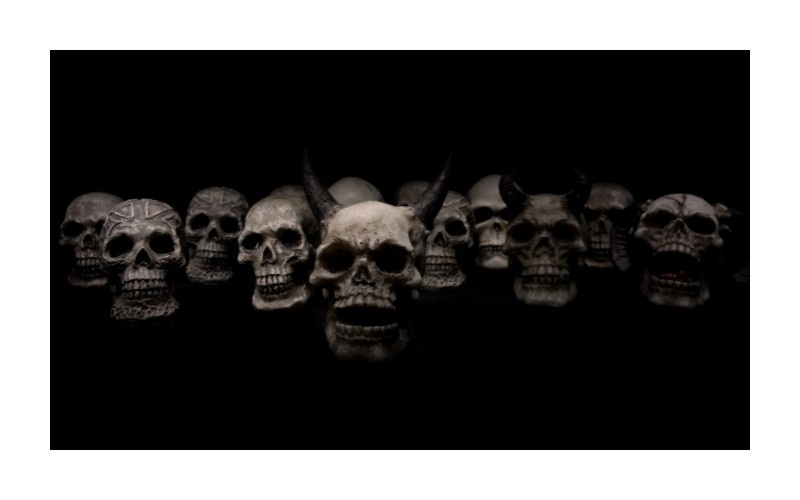
Horror today continues this thread of cultural commentary. Social media and technology horrors explore privacy and connectivity fears of our time. Climate change and ecological collapse stories resonate with fears about the future our children will inherit. Artificial intelligence horror tells us of fears of losing human relevance and of job displacement.
The genre acts as an early warning system for cultural fears. Frequently, horror depicts fears before they consciously manifest themselves as issues in mainstream culture.
Psychological horror operates in the opposite way, threatening our concept of reality and sanity. What these tales do is imply that we shouldn’t be able to believe our own eyes, that reality may not be as it appears. Horror here doesn’t come from monsters outside ourselves but from the idea that our own minds can betray us. This kind of horror is especially disturbing because it doesn’t provide a visualized enemy for us to engage in combat against or run from.
The deepest horrr tends to layer one technique on another, bringing multiple levels of experience all simultaneously working upon us. The greatest horror artists know that fear is a state of mind, not simply an emotion, and that it can be influenced by anything from editing rhythm to color palette choice.
The Digital Age: Horror in New Media
The internet and digital technology have fundamentally changed how we create, consume, and share horror. Social media platforms have given birth to new forms of short-form horror, from creepypasta stories that spread through online communities to TikTok videos that pack scares into fifteen-second clips.
These modern modes of horror tend to toy with the genre conventions of their mediums. A tale could simulate being an actual social media update or news report, confusing the reader over what is real and what is not. Video games have developed entirely new means of frightening people by placing players in direct control of characters who are experiencing terrible circumstances.
Virtual and augmented reality technologies hold out the promise of making horror even more immersive. When we can literally see around a haunted house or sense the presence of a ghost standing next to us, the boundary between fiction and experience becomes harder to define. These technologies pose new questions about the ethics of producing fear experiences and the psychological effects of ultra-realistic horror.
The democratisation of content creation also shifted who gets to tell horror stories. Solo creators can now produce for worldwide audiences without the gatekeepers of old publishing or film distribution. This has resulted in increasingly diverse voices in horror as creators from various cultural backgrounds bring with them their own bogeymen and folklore to the horror genre.
The trick for contemporary horror producers is to discover fresh means of startling and disturbing viewers who have already witnessed everything.
Horror has also become more social with the advent of the digital age. Internet forums debate and dissect horror pieces at an unparalleled level of detail.
The Future of Fear
The age of AI has already started to shape horror, with tales that bring on existential fears surrounding surveillance, automation, and labour displacement. These tales address basic fears surrounding the definition of what it is to be human in an era where there is growing automation.
Climate change horror, or “cli-fi,” examines dread concerning ecological collapse and the type of world we may be passing on to our descendants. Such fiction tends to emphasize the disintegration of social structures in the wake of ecological catastrophes, a reflection of very genuine apprehensions regarding human civilization’s future.
The COVID-19 pandemic has certainly had an impact on horror as well, although we’re only just starting to realize how. Tales of isolation, contamination, and social collapse have become newly relevant. The experience of lockdown and social distancing has imbued the horror trappings of being trapped and isolated from others with new resonance.
Technology will continue to alter the process of creating and consuming horror. New media and new platforms will give rise to new ways to frighten people. Virtual reality, augmented reality, and other technologies on the horizon will enhance horror experiences to be more immersive and perhaps more effective.
But no matter how the medium changes, the basic appeal of horror will probably not change. So long as human beings experience uncertainty, death, and the unknown, we will go on being attracted to tales that allow us to work out these terrors. Horror will go on playing its ancient role as both entertainment and purging, enabling us to deal with the darkness both within us and around us.

